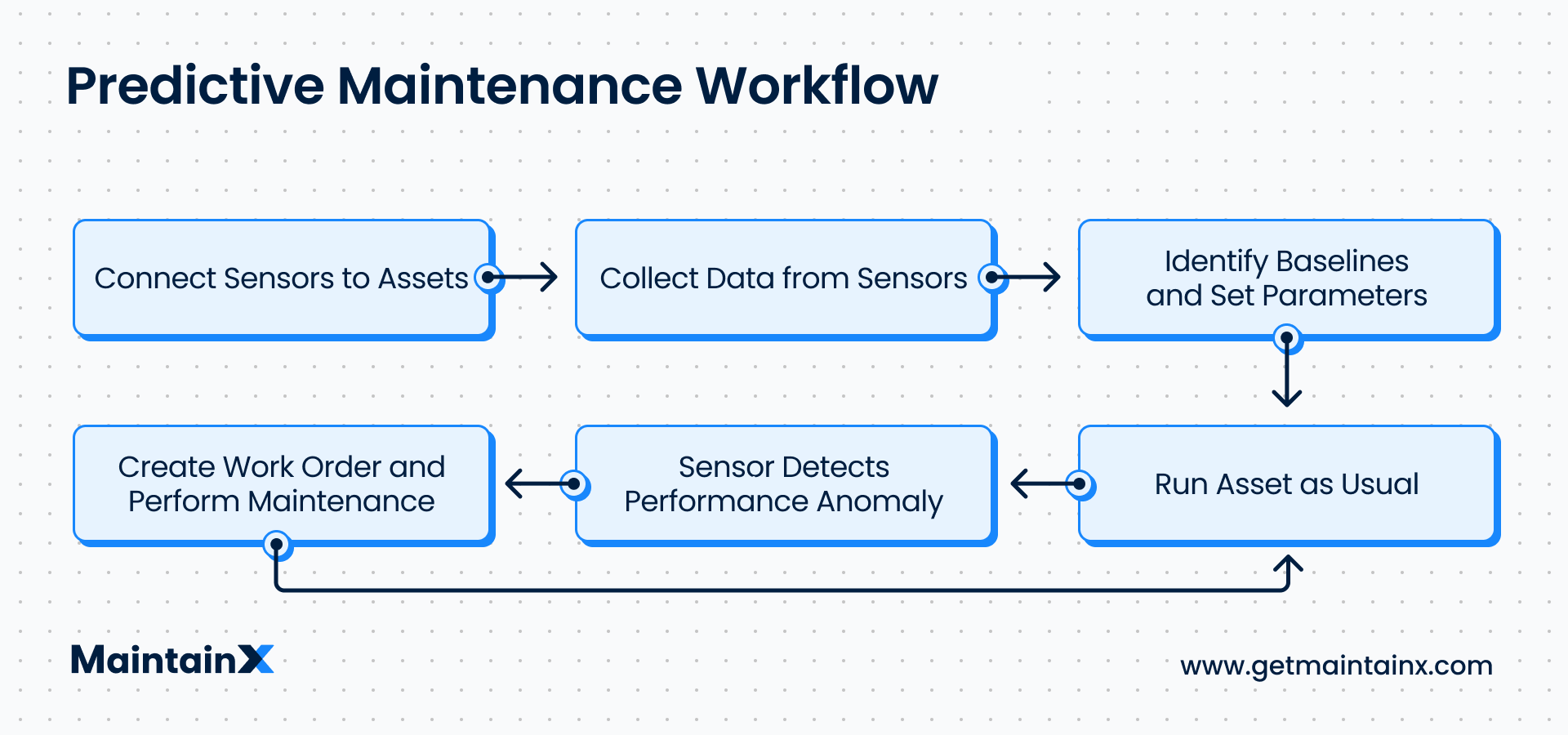A car should have its oil changed every 3,000 miles and tires rotated every 6,000 miles. Your lawnmower’s spark plugs should be replaced about once a year. You should change the air filter on your home’s furnace every one to three months. The coils on your refrigerator condenser should be dusted on at least an annual basis.
What do these tasks have in common? They’re all examples of routine maintenance activities. And while these are common activities that a household often carries out, the concept also applies to businesses.
In this post, we’ll tell you about routine maintenance, why it’s important, the various types of maintenance, and more.
What Are Maintenance Activities?
Maintenance activities are a part of routine maintenance and describe the steps taken to prolong the lifetime of equipment and assets and reduce the risk of equipment failures and downtime. Depending on the machine that’s being serviced, maintenance activities are performed daily, weekly, monthly, quarterly, or even annually.
id-22bd1YUqPh3pxbaHCZrBZG
Routine maintenance is proactive maintenance: leadership can develop a strategy to fulfill such obligations and keep equipment running effectively and efficiently.
Use a CMMS to Help Run Your Routine Maintenance Activities
More than half of all companies still rely on conventional spreadsheets and schedules to manage maintenance. A better way: adopt a CMMS system.
A CMMS will help keep your maintenance on track in several ways. These include:
- Managing time-based maintenance activities and assigning work orders to workers
- Running accurate spare parts inventory to enable easy parts replacement during routine maintenance.
- Managing real-time data: The right CMMS program doesn’t just capture and store data, it reports actionable to influence your strategy.
Improving maintenance efficiency has a positive impact on reliability—so companies can cut costs without risking performance.
McKinsey
The Importance of Maintenance Activities
Routinely performed maintenance activities are important for reducing the likelihood of emergency maintenance and unplanned downtime. Emergency maintenance, or breakdown maintenance, is reactive maintennace work performed when a machine or piece of equipment breaks down.
Emergency maintenance is also likely to be expensive. So, it’s imperative for any firm to have its equipment up and running to avoid extended unplanned downtime.
Unplanned downtime is the unexpected shutdown or failure of machines, equipment, or processes. According to studies, industrial firms say that just one hour of unplanned downtime can cost more than $100,000 in lost productivity. Studies even indicate that unplanned downtime can cost as much as $22,000 per minute. Routine maintenance work helps reduce emergency maintenance and unplanned downtime—and the high costs associated with each.
Key Benefits of Maintenance Activities
Aside from reducing the likelihood of emergency maintenance and unplanned downtime, there are additional benefits of robust routine maintenance activities. These include:
- Prolongs useful life of equipment: Equipment that’s properly cared for is likely to last longer and work efficiently longer. A strong routine maintenance plan helps maximize the return on investment of equipment on your shop floor.
- Creates a safer environment: Malfunctioning equipment can be dangerous. The better a firm’s machinery is working, the safer the operating conditions on the floor.
- Allows workers to catch other issues: Maintenance activities allow workers to observe various parts of equipment that may not have otherwise been visible. This can help them learn more about the equipment and catch other small problems before they become big ones.
- Engages all workers: As we said earlier, routine maintenance activities don’t require any specialized skills or training. Noting this, any one of your employees can carry these tasks out. It’s a great way to get all of your workers involved and make sure that everyone is contributing.
The Various Types of Maintenance Activities
Routine maintenance activities can be carried out in several different ways. Here’s an overview of how many firms manage when such routine maintenance tasks are performed:
- Time-based: As the name implies, time-based maintenance strategies involve maintenance at fixed intervals, regardless of equipment condition.
- Failure-finding: This type of preventive maintenance is done on equipment that has certain parts or pieces that may lead to unplanned downtime or a serious safety issue.
- Risk-based: Risk-based maintenance is determined by calculations that assess the likelihood of equipment failure and involves carrying out preventive maintenance accordingly.
- Condition-based: This involves the routine monitoring of equipment for issues that could lead to unplanned downtime.
- Predictive maintenance: This advanced form of planned maintenance monitors asset conditions in real time.

Examples of Maintenance Activities
As we’ve said, routine maintenance doesn’t require specific specialized skills or training. Examples of such maintenance activities include:
- Lubricating parts of a machine to reduce friction and the potential for excess wear and tear
- Cleaning machine surfaces
- Making basic calibration adjustments
- Inspecting specific parts of a machine that are not visible
- Replacing basic machine components
Plan Your Maintenance Activities With a CMMS
A CMMS like MaintainX can help you plan and schedule all your maintenance activities according to the maintenance strategy you’ve set for each asset or piece of equipment. Get started for free and discover how MaintainX can optimize your maintenance activities!
Maintenance Activities FAQs
Why is Implementing Regular Maintenance Important?
Regular maintenance programs are crucial for preventing equipment breakdowns, ensuring safety, extending equipment lifespan, and maintaining optimal working conditions while keeping maintenance costs low.
How Can I Keep Track of Maintenance Schedules?
Use a maintenance checklist or calendar to track when maintenance tasks are due. Many modern equipment models also come with built-in maintenance management systems.
How Can I Prioritize Maintenance Activities on a Tight Budget?
Prioritize maintenance operations based on critical needs and safety concerns. Performing regular, preventative maintenance is often more cost-effective than corrective maintenance, addressing issues after they escalate.

Caroline Eisner
Caroline Eisner is a writer and editor with experience across the profit and nonprofit sectors, government, education, and financial organizations. She has held leadership positions in K16 institutions and has led large-scale digital projects, interactive websites, and a business writing consultancy.
See MaintainX in action


